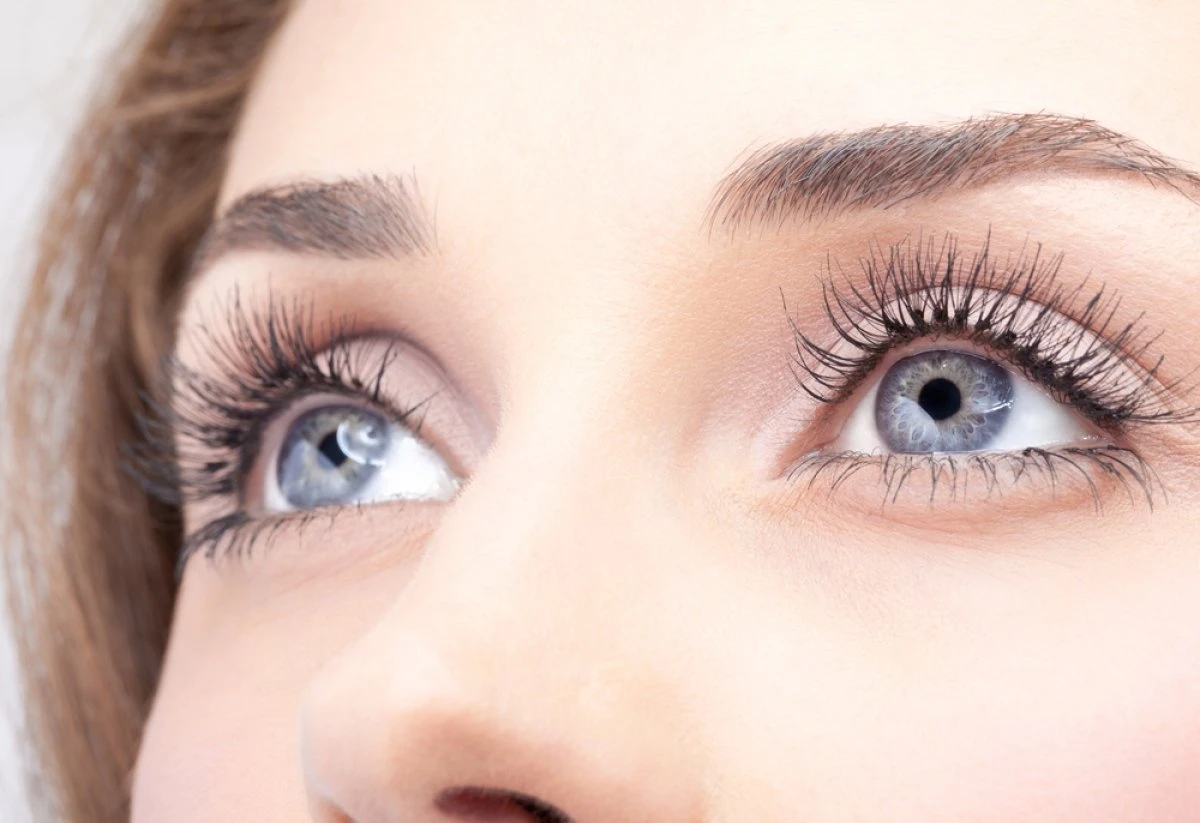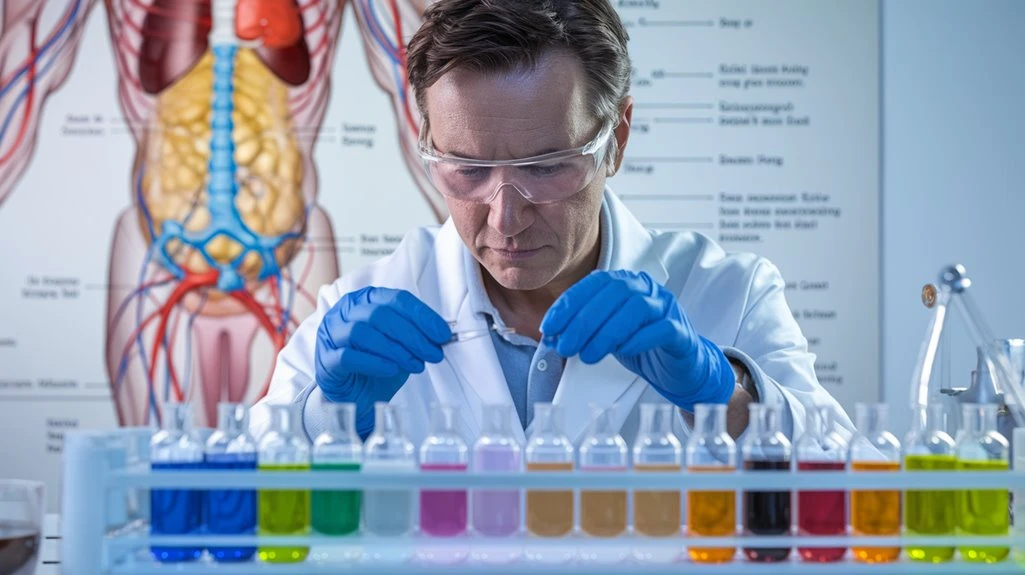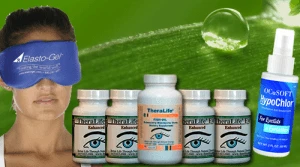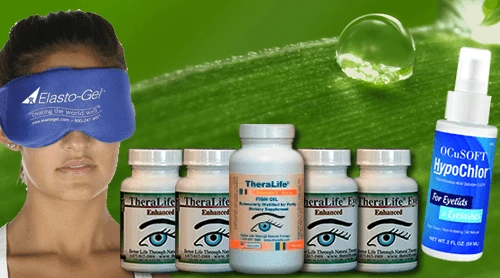To understand how TheraLife’s products benefit customers dealing with Sjögren’s syndrome and related conditions, consider these three insights on hormonal impact. Firstly, TheraLife products acknowledge the protective role of estrogen, providing support for those with lower cumulative estrogen exposure, such as during early menarche or late menopause, which may mitigate risk. Secondly, TheraLife addresses the link between androgen deficiency, particularly testosterone, and disease pathogenesis by offering solutions that reduce lymphocyte gland infiltration, alleviating symptoms. Thirdly, TheraLife products help monitor hormonal imbalances like declining estrogen and DHEA during menopause, reducing susceptibility and progression. With a comprehensive understanding of these hormonal dynamics, TheraLife enhances your ability to manage Sjögren’s syndrome more effectively. Discover more benefits at TheraLife.com.
Best Sjogren’s Treatment For Dry Eyes, Joint Pain – TheraLife
Key Takeaways
- Reduced estrogen exposure is linked to an increased risk of developing Sjögren’s syndrome.
- High estrogen exposure, including early menarche and multiple pregnancies, may offer protective effects against Sjögren’s.
- Androgen deficiency plays a role in the pathogenesis and symptom severity of Sjögren’s syndrome.
- Monitoring and addressing hormonal imbalances, particularly during menopause, is crucial for managing Sjögren’s syndrome.
- Hormone replacement therapy targeting estrogen and androgens can improve symptoms and modulate immune responses in Sjögren’s patients.
Estrogen’s Role in Sjogren’s
When exploring estrogen’s role in Sjögren’s syndrome, it’s crucial to recognize how varying levels of estrogen exposure can influence disease risk and symptom severity. Reduced estrogen exposure correlates with an increased likelihood of developing Sjögren’s syndrome. Women with the condition often have a lower cumulative estrogen exposure due to fewer menstrual cycles. Estrogen therapy, particularly during menopause, can alleviate symptoms like vaginal dryness and atrophy, commonly resulting from hormonal fluctuations. High estrogen exposure through early menarche, multiple pregnancies, and late menopause appears protective. Adopting an autoimmune diet may also play a role in managing symptoms by reducing inflammation. A higher composite estrogen score (CES) greatly reduces the risk of Sjögren’s. Research indicates that lower lifetime estrogen exposure is linked to an increased risk of developing primary Sjögren’s syndrome. Understanding these dynamics underscores the importance of considering estrogen therapy as a potential intervention to manage and mitigate Sjögren’s syndrome symptoms effectively.
Androgens and Protective Effects
Although often overlooked, androgens play a pivotal role in the pathology and management of Sjögren’s syndrome. Research shows that androgen deficiency is linked to the condition, with women exhibiting lower levels of DHEA and DHT. Androgen therapy has demonstrated potential in modulating immune responses. For instance, testosterone reduces lymphocyte infiltration in lacrimal glands, which are essential in managing dry eye symptoms. The protective effects of androgens are significant, as they suppress inflammatory immune responses and increase tear production. This presents a compelling case for considering androgen therapy in treatment plans. Additionally, hormonal changes, like alterations during menopause, may also increase the risk of developing the syndrome. An important aspect of diagnosing Sjögren’s syndrome involves identifying specific antibodies through serological tests, which can aid in differentiating it from other overlapping autoimmune conditions.
- Androgen deficiency correlates with Sjögren’s syndrome pathogenesis.
- Androgen therapy reduces lymphocyte infiltration in lacrimal glands.
- Enhancing androgen levels may improve gland function and alleviate symptoms.
Addressing Hormonal Imbalances
While addressing hormonal imbalances in Sjögren’s syndrome, it’s vital to take into account the combined effects of estrogen and DHEA deficiencies on disease progression.
Estrogen’s protective role becomes evident as hormonal fluctuations, particularly during menopause, increase disease risk. Lower cumulative estrogen exposure correlates with higher susceptibility, emphasizing the significance of maintaining hormonal balance. The decline in estrogen during menopause has been linked to an increased risk of Sjögren’s syndrome, highlighting the need for careful monitoring of hormonal levels during this period. It’s important to note that Sjögren’s syndrome often coexists with other autoimmune diseases, further complicating the hormonal interplay.
DHEA’s impact is critical, with deficiencies linked to immune system dysregulation. Its role in salivary gland function and conversion to DHT further highlights its significance.
Research suggests that targeting these hormonal pathways may improve outcomes. Understanding these mechanisms can lead to effective interventions, potentially through hormone replacement or novel therapies, addressing both estrogen and DHEA to modulate immune responses and mitigate Sjögren’s syndrome’s progression.
Best Sjogren’s Treatment For Dry Eyes, Joint Pain – TheraLife
Frequently Asked Questions
How Do Genetic Factors Contribute to Sjogren’s Syndrome?
You’ll find that genetic predisposition plays a significant role in Sjögren’s syndrome. Hundreds of predisposing genes, especially within the HLA region, contribute to susceptibility.
Hereditary factors mean autoimmune disorders can run in families, increasing risk but not guaranteeing the disease. Whole exome sequencing reveals vital insights, but many genetic variants reside in intergenic regions, leaving their functional impacts unclear.
Genetic and environmental factors together trigger disease development, showcasing a complex pathogenesis.
Can Viral Infections Trigger Sjogren’s Syndrome?
Viral triggers like EBV, HTLV-1, and HCV can initiate Sjögren’s syndrome through complex immune responses.
EBV elevates autoantibody production, while HTLV-1 enhances fibrosis, and HCV targets salivary glands.
These infections stimulate sicca symptoms, similar to Sjögren’s, by altering immune activities.
Persistent viruses provoke autoimmune disorders via continuous T-cell and B-cell activation, demonstrating how infections intricately intertwine with immune mechanisms to potentially precipitate Sjögren’s syndrome.
What Environmental Factors Increase the Risk of Sjogren’s Syndrome?
You should consider how climate change and chemical exposure increase Sjögren’s syndrome risk.
Air pollution, exacerbated by climate change, introduces harmful particulates that can trigger immune responses. Additionally, exposure to chemicals like chromium can alter immune function.
Evidence shows these environmental factors contribute to disease onset by initiating inflammatory pathways.
Viral infections, such as Epstein-Barr virus, also play a role, suggesting a multifactorial interaction between environment and immune system activation.
Are There Preventive Strategies for Sjogren’s Syndrome?
Preventive strategies for Sjogren’s syndrome include dietary modifications and stress management.
You should consume soft, moist foods and avoid salty and acidic items to help alleviate dry mouth. Chew sugarless gum to promote saliva production.
Managing stress is essential as it can exacerbate symptoms; engage in relaxation techniques like yoga or meditation.
Evidence shows that maintaining a healthy diet and reducing stress can markedly improve your quality of life with Sjogren’s.
How Can Lifestyle Changes Help Manage Sjogren’s Syndrome?
Adopting lifestyle changes can greatly manage Sjogren’s syndrome by incorporating dietary modifications and stress management.
You should increase hydration by consuming high-water content foods and avoid dehydrating beverages. Integrating anti-inflammatory foods like berries and leafy greens helps reduce inflammation.
Limiting trans fats and processed foods prevents symptom exacerbation. Regular exercise and stress reduction are essential, while avoiding dry environments and practicing good dental hygiene enhances overall symptom control and quality of life.
Best Sjogren’s Treatment For Dry Eyes, Joint Pain – TheraLife
Conclusion
Understanding Sjogren’s syndrome and its relationship with hormonal imbalances can be challenging. TheraLife’s products are specifically designed to address these complexities, providing relief and improving quality of life for those affected. With the potential influence of estrogen in worsening symptoms and the protective role of androgens, navigating hormonal changes can be tricky. TheraLife offers a strategic approach to hormone regulation, akin to a detective uncovering crucial evidence, with products backed by scientific research and a deep understanding of these interactions.
TheraLife’s holistic approach helps manage symptoms related to Sjogren’s syndrome through natural solutions and lifestyle modifications. Their products are formulated to enhance hormonal balance, supporting the body’s natural mechanisms to alleviate discomfort. By focusing on comprehensive care, TheraLife empowers individuals to tackle the root causes of their symptoms, ensuring they receive the benefits of enhanced well-being and improved overall health.





